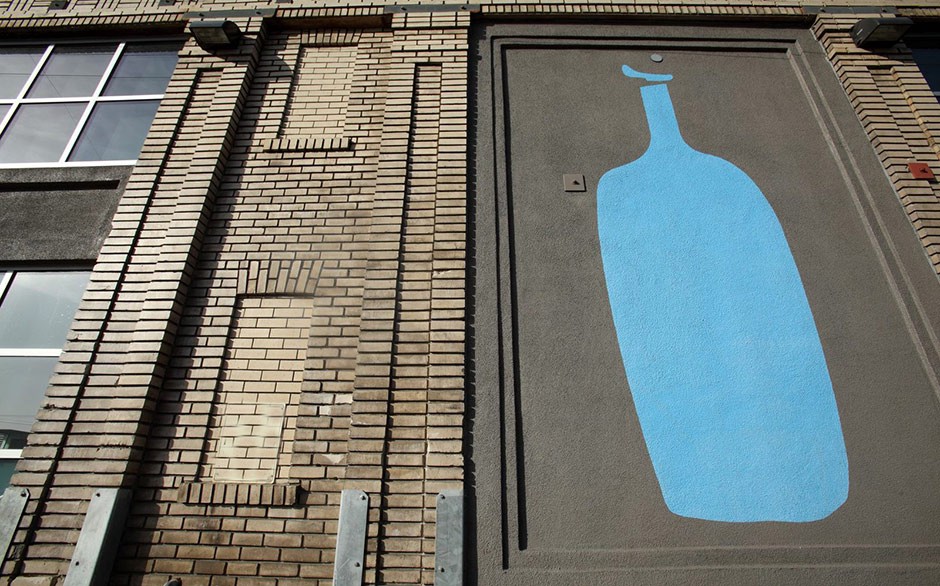The Big Blue Bottle Machine

There are at least two things to say with regards to Alexis Madrigal’s long ode to the processes that have produced both coffee’s shiniest monolith, Blue Bottle, and its newish adorable milk cartons filled with coffee, chicory, milk and sugar.
While it’s only a tiny moment in the piece, Madrigal hits on precisely what has propelled Blue Bottle beyond its specialty coffee peers in the public imagination (and investors’ hearts):
But going into our interview, what I found most interesting about [James Freeman], and a defining trait of Blue Bottle’s business maneuverings, is that he considers all the micropsychological conditions that someone might be in as they enter a cafe. “Sometimes people go out for their first coffee of the day and that’s a very vulnerable time in someone’s life, while they’re waiting for that first cup of coffee,” he told the Food Seen podcast, for example.
Until recently, within the higher rungs of the specialty coffee industry, it has been extremely fashionable to have barely disguised disdain for the quality of Blue Bottle’s actual coffee — it’s so open that it just barely stays inside the line of being an open secret (go ahead, ask your favorite barista!) — but it’s hard to find someone who would dispute that in terms of the entire coffee experience, Blue Bottle has been largely unparalleled. (G & B in L.A. is doing interesting things in this regard.) Blue Bottle’s stores are beautiful and inviting; its baristas are generally unscowly and accommodating; its coffee is fine (most would agree that it has gotten notably better in the last year). If you didn’t wait for an hour, you walk out of Blue Bottle probably feeling fantastic about life, which is not always true of the places that serve the actual best coffee. That’s because Freeman cares as much, if not more, about how you feel than what you taste.
It’s unsurprising that Blue Bottle is the first of the current milieu of flagship specialty coffee companies — your Counter Cultures, Stumptowns and Intelligentsias — to engineer a genuinely delicious mass-produced cold coffee beverage for precisely that reason: It has always cared less about pushing things like origin and the terroir of coffee on its customers than its peers have; it cares about what people will enjoy. And people enjoy coffee mixed with milk and sugar and spices, because it’s delicious. Conveniently, the milk and sugar provide artful, robust camouflage against defects that might arise in the coffee, which must remain shelf stable in grocery-store coolers for weeks on end; most coffee guides suggest that cold brew, even kept in a fridge, is past its peak after just two weeks. So it’s no wonder that a Blue Bottle milk carton is going to taste better than straight black coffee from a Stumptown Stubbie (which I’ve always found, even after three years, often taste no better than cheap, shitty-delicious Japanese canned coffee that carries none of the pretense?). No wonder, perhaps, that Stumptown also sells its own milk cartons — which I bet taste just as delicious as Blue Bottle’s.
